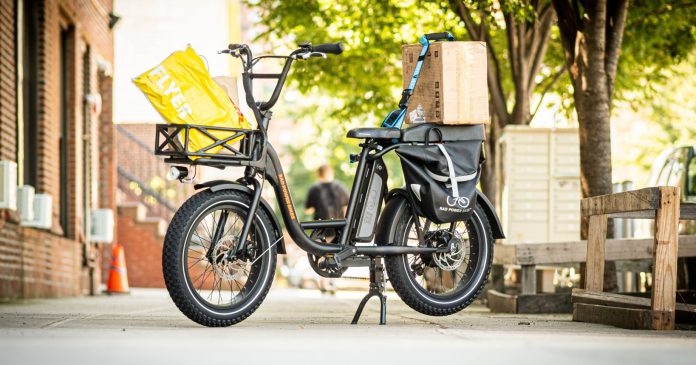Introduction
In the ever-growing world of electric bikes (e-bikes), safety has become a paramount concern. Rad Power Bikes, the largest e-bike manufacturer in North America, is taking a significant step forward by pledging to produce only those e-bikes that comply with UL (Underwriter’s Laboratory) safety standards. This decision comes on the heels of a series of devastating fires, primarily in New York City, that have been linked to malfunctioning e-bike batteries.
The Significance of UL Standards
UL Standards and Engagement, a nonprofit organization, plays a crucial role in developing safety standards for various consumer products, including e-bikes and e-scooters. Until recently, these safety standards were entirely voluntary. However, the landscape is changing, especially with the New York City Council passing a law that mandates all e-bikes sold within the city to adhere to UL standards. Some elected officials are even advocating for a federal safety standard covering all e-bikes sold in the United States.
Rad Power Bikes’ Safety Initiative
The deadline for compliance with the New York City law looms, and Rad Power Bikes is stepping up to set an example for the industry. As the largest e-bike brand in America, the company is embracing the responsibility of driving the e-bike market towards a safer future. According to Phil Molyneux, Rad Power Bikes’ CEO, safety is paramount. He states, “We’re very passionate about safety of our riders and the quality of our bikes and pushing the industry forward.”
Rad Power Bikes’ commitment includes adhering to UL 2849 standards for e-bikes and UL 2271 standards for e-bike batteries. Moreover, the company is planning to release multiple new models in 2024 that are fully compliant with these UL safety standards.
Understanding UL 2849 and UL 2271
UL 2849 encompasses the entire electrical system of an e-bike, subjecting its lithium-ion battery to a battery of stress tests. These tests evaluate the battery’s reaction to overcharging, physical stresses like shaking, dropping, piercing, and crushing, as well as exposure to water and extreme temperatures. Furthermore, quarterly audits are mandatory to maintain UL certification.
The Cost of Compliance
While embracing safety standards is crucial, it can also be financially challenging. UL testing comes at a considerable cost, ranging from $30,000 to $100,000 per model, as reported by industry experts. However, Rad Power Bikes is taking a customer-centric approach and has no intention of passing this cost along to its customers. Ensuring safety remains a top priority without increasing prices.
The E-Bike Industry’s Safety Challenges
The recent spate of battery fires, some of them fatal, has shed light on the e-bike industry’s overreliance on cheaply made components, often sourced from China. In New York City alone, at least 92 fires, injuring 64 people and claiming nine lives, were linked to faulty e-bike batteries this year. Last year, 10 people lost their lives in e-bike battery-related fires.
Several factors contribute to this alarming rise in incidents. E-bikes are gaining popularity, particularly among delivery workers in densely populated urban areas like New York City. Many of these workers cannot afford higher-priced, quality e-bikes, leading them to opt for cheaper, lower-quality alternatives. Additionally, they often charge their e-bikes in apartment buildings, using mismatched chargers, further increasing the risks associated with battery-related incidents.
The Dangers of Poorly Made Batteries
Poorly made e-bike batteries can, in some cases, trigger a dangerous chemical process known as “thermal runaway.” In this process, one cell overheats, causing other cells to disintegrate and release their stored energy. E-bike fires resulting from thermal runaway can be exceptionally challenging to extinguish, complicating the efforts of fire officials to respond effectively.
Industry Responsibility
It’s worth noting that no Rad Power Bikes have been implicated in any of these fires. Nevertheless, the company recognizes its responsibility to lead the industry towards the use of higher-quality components and safer practices.
Currently, New York City stands as the largest city to enforce rules requiring UL certification for e-bikes. However, other municipalities are expected to follow suit. The federal E-BIKE Act, introduced earlier this year, could potentially require UL certification for e-bikes to be eligible for refundable tax credits.
Conclusion
As the e-bike industry continues to expand and evolve, safety remains a top priority. With the advent of electric mobility, the responsibility to ensure that these devices are safe for riders and communities cannot be understated. Rad Power Bikes’ commitment to UL safety standards sets a positive precedent for the industry. However, the path to widespread safety adoption is ongoing, and collaboration within the industry will be key.
Rad Power Bikes’ CEO, Phil Molyneux, acknowledges that lithium-ion batteries can be unpredictable, and the industry has much to learn. Drawing inspiration from the automotive industry’s approach to safety, he emphasizes the importance of adopting a common framework for safety. With e-bikes playing a pivotal role in addressing climate change, urban congestion, and traffic safety, the industry cannot afford to compromise on safety standards.
FAQs
- Q: What are UL safety standards, and why are they important for e-bikes?
- UL safety standards are guidelines developed to ensure the safety of consumer products, including e-bikes. They are essential for preventing incidents like battery-related fires.
- Q: How is Rad Power Bikes contributing to safety in the e-bike industry?
- Rad Power Bikes is committing to comply with UL 2849 and UL 2271 standards, as well as releasing new models that meet these standards.
- Q: Why have there been concerns about e-bike batteries, particularly in New York City?
- E-bike battery-related fires in New York City have raised concerns due to the popularity of e-bikes among delivery workers and the use of cheaply made components.
- Q: What challenges do e-bike fires pose to firefighting efforts?
- E-bike fires can be challenging to extinguish, making rapid response by fire officials difficult.
- Q: How can the e-bike industry address safety concerns in the future?
- The e-bike industry can learn from automakers and adopt a common framework for safety to prevent incidents and ensure consumer trust.

